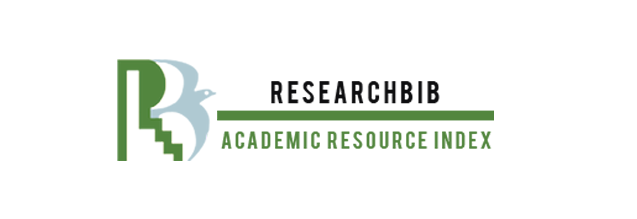Habilidade competitiva da cultivar de trigo Fundacep Horizonte sob convivência com o azevém
DOI:
https://doi.org/10.36812/pag.2016221/21-13Palavras-chave:
Triticum aestivum, Lolium multiflorum, CompetitiveResumo
The weeds present in wheat compete for several factors negatively impacting on crop productivity. In this context, the goal of the study was to morphologically analyze wheat and ryegrass in response to stress caused by competition between crop and weed. The experiment was conducted in completely randomized design with 4 replications in a replacement series with a population of 64 plants per pot. Treatments consisted of plant proportions of ryegrass and wheat. The proportions were tested: 100/0 (pure stand of wheat), 75/25, 50/50, 25/75 and 100/0% (pure stand of ryegrass). According to the results, it was observed that wheat Fundacep Horizonte has higher than ryegrass competitive ability; intraspecific competition was more damaging to wheat, whereas interspecific was more damaging to the ryegrass.Downloads
Referências
ALMEIDA, M. L.; MUNDSTOCK, C. M. A qualidade da luz afeta oafilhamento em plantas de trigo quando cultivadas sob competição. Ciência Rural, v.31,n.3, p.401-408, 2001. DOI: https://doi.org/10.1590/S0103-84782001000300006
BALBINOT JR., A. A.et al.Características de plantas de arroz e a habilidade competitiva com plantas daninhas. Planta Daninha, v. 21, n.2, p.165-174, 2003. DOI: https://doi.org/10.1590/S0100-83582003000200001
BENJAMIN, L. R.et al. A model to simulate yield losses in winter wheat caused by weeds, for use in a weed management decision support system. Crop Protection, v.29,n.11,p.1264-1273, 2010. DOI: https://doi.org/10.1016/j.cropro.2010.07.015
BIANCHI, M. A.; FLECK, N.G.; LAMEGO, F.P. Proporção entre plantas de soja e plantas competidoras e as relações de interferência mútua. Ciência Rural, v.36, n.5, p.1380-1387, 2006. DOI: https://doi.org/10.1590/S0103-84782006000500006
COMISSAO BRASILEIRA DE PESQUISA DETRIGO E TRITICALE. Informações Técnicas para Trigo e Triticale -Safra 2011 e IVReunião da Comissão Brasileira de Pesquisa de Trigo e Triticale, 2011.
CONAB. Companhia Nacional de Abastecimento. Nono levantamento da Safra Brasileira de Grãos2017/2018. Disponível em: https://www.conab.gov.br/info-agro/safras/graos Acesso em:2018.
COUSENS, R. Aspects of the design and interpretation of competition (interference) experiments.Weed Technology, v.5,n.3,p.664-673, 1991. DOI: https://doi.org/10.1017/S0890037X00027524
EMBRAPA. A cultura do trigo irrigado no Sistema Plantio Direto. Disponível em: www.cnpaf.embrapa.br/publicacao/circulartecnica/circ_78.pdf. Acesso em: jan 2015.
EMBRAPA. Centro Nacional de Pesquisa de Solos. Sistema brasileiro de classificação de solos.2.ed. Rio de Janeiro: Embrapa Solos, 2009. 412 p.
FAO (Food and Agricultural Organization), 2005. FAOSTAT data base for agriculture.Disponível em: http://faostat.fao.org/faostat/collection?subset=agriculture. Acesso em: mai. 2015.
FLECK, N. G.et al. Características de plantas de cultivares de arroz irrigado relacionadas à habilidade competitiva com plantas concorrentes. Planta Daninha, v.21,n.1,p.97-104, 2003. DOI: https://doi.org/10.1590/S0100-83582003000100012
FRAGA, D. S.etal. Adaptive value of ryegrass biotypes with low-level resistance and susceptible to the herbicide fluazifop and competitive ability with the wheat culture. Planta Daninha, v. 31, n.4, p. 875-885, 2013. DOI: https://doi.org/10.1590/S0100-83582013000400014
GALON, L. et al. Habilidade competitiva de cultivares de cevada convivendo com azevém.Planta Daninha, v.29, n.4, p.771-781, 2011. DOI: https://doi.org/10.1590/S0100-83582011000400007
GAO, J. P.;CHAO, D. Y.; LIN, H. X.Understanding Abiotic Stress Tolerance Mechanisms: Recent Studies on Stress Response in Rice. Plant Biology, v. 49,n.6, p. 742-750, 2007. DOI: https://doi.org/10.1111/j.1744-7909.2007.00495.x
HEAP, I. The International Survey of Herbicide Resistant Weeds. Online.Disponível em: <http://www.weedscience.org>.Acesso: 2018.
HOFFMAN, M. L.; BUHLER, D. D. Utilizing Sorghum as functional model of crop-weed competition.I. Establishing a competitive hierarchy. Weed Science, v.50, n.4, p.466-472, 2002. DOI: https://doi.org/10.1614/0043-1745(2002)050[0466:USAAFM]2.0.CO;2
HOLMAN, J. D.et al. Spring Wheat, Canola, and Sunflower Response to Persian Darnel (Lolium persicum) Interference. Weed Technology, v.18, n.3, p.509-520, 2004. DOI: https://doi.org/10.1614/WT-03-056R
PAULA J.M.et al. Competição de trigo com azevém em função da época de aplicação e doses de nitrogênio. Planta Daninha, v.29, n. 3, p. 557-563, 2011. DOI: https://doi.org/10.1590/S0100-83582011000300009
RADOSEVICH, S.R. Methods to study interactions among crops and weeds. Weed Technology, v.1,n.3,p.190-198, 1987. DOI: https://doi.org/10.1017/S0890037X00029523
RADOSEVICH, S. R.; HOLT, J.; GHERSA, C. Plant in plant associations. In: Ecology of weeds and invasive plants: Relationship to agriculture and natural resource management. 3.ed. New York: John Wiley eSons, 2007.p.183-257. DOI: https://doi.org/10.1002/9780470168943.ch6
RIGOLI, R. P. et al. Habilidade competitiva de trigo (Triticum aestievum) em convivência com azevém (Lolium multiflorum) ou nabo (Raphanus raphanistrum). Planta Daninha, v.26,n.1,p.93-100, 2008. DOI: https://doi.org/10.1590/S0100-83582008000100010
VARGAS, L.; ROMAN, E. S. Seletividade e eficiência de herbicidas em cereais de inverno. Revista Brasileira de Herbicidas, v.4, n.3, p. 1-10, 2005. DOI: https://doi.org/10.7824/rbh.v4i3.32
VILÀ, M.; WILLIAMSON, M.; LONSDALE, M. Competition experiments on alien weeds with crops: lessons for measuring plant invasion impact? Biology Invasions, v.6,n.1,p.59-69, 2004. DOI: https://doi.org/10.1023/B:BINV.0000010122.77024.8a
VILA-AIUB, M.M.; NEVE, P.; POWLES, S.B. Evidence for an ecological cost of enhanced herbicide metabolism in Lolium rigidum. Journal of Ecology, v.97, p.772-780, 2009. DOI: https://doi.org/10.1111/j.1365-2745.2009.01511.x
VITTA, J.;SATORRE, E. H. Validation of a weed: crop competition model. Weed Research, v.39, p.259–269, 1999. DOI: https://doi.org/10.1046/j.1365-3180.1999.00142.x
ZANINE, A. M.; SANTOS, E. M. Competição entre espécies de plantas –uma revisão. Revista da FZVA, v.11,n.1,p. 10-30, 2004.
Downloads
Publicado
Como Citar
Edição
Seção
Licença
Os autores declaram que o trabalho não foi publicado anteriormente, nem enviado simultaneamente para publicação em outro periódico e que concordam com a submissão, conteúdo e transferência dos direitos de publicação do artigo em questão para o periódico científico Pesquisa Agropecuária Gaúcha - PAG. Os autores assumem total responsabilidade pela originalidade do artigo, podendo incidir sobre os mesmos, eventuais encargos decorrentes de reivindicação, por parte de terceiros, em relação à autoria do artigo.
A reprodução total dos artigos da Revista em outros meios de comunicação eletrônicos de uso livre é permitida de acordo com a licença Creative Commons Atribuição-NãoComercial-CompartilhaIgual 4.0 Internacional.




















